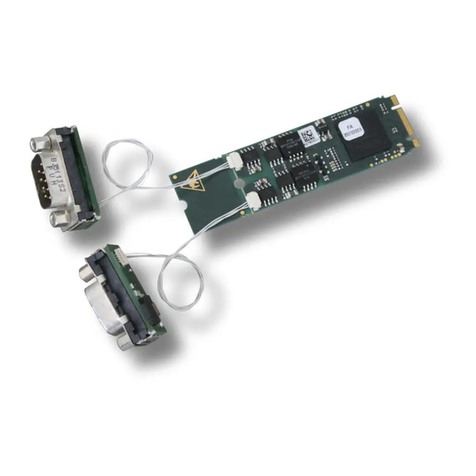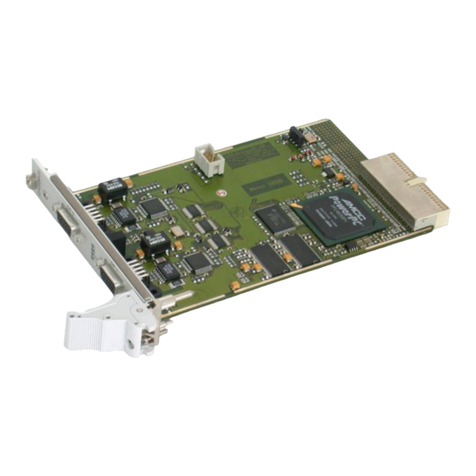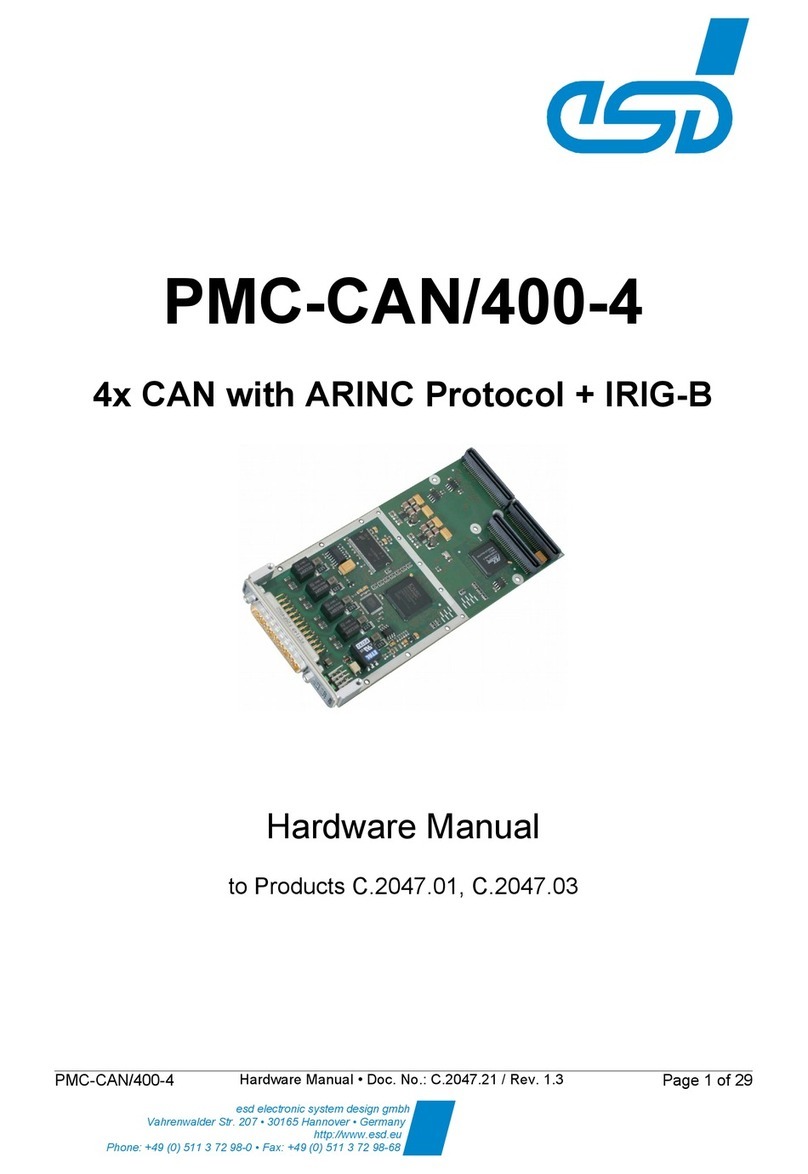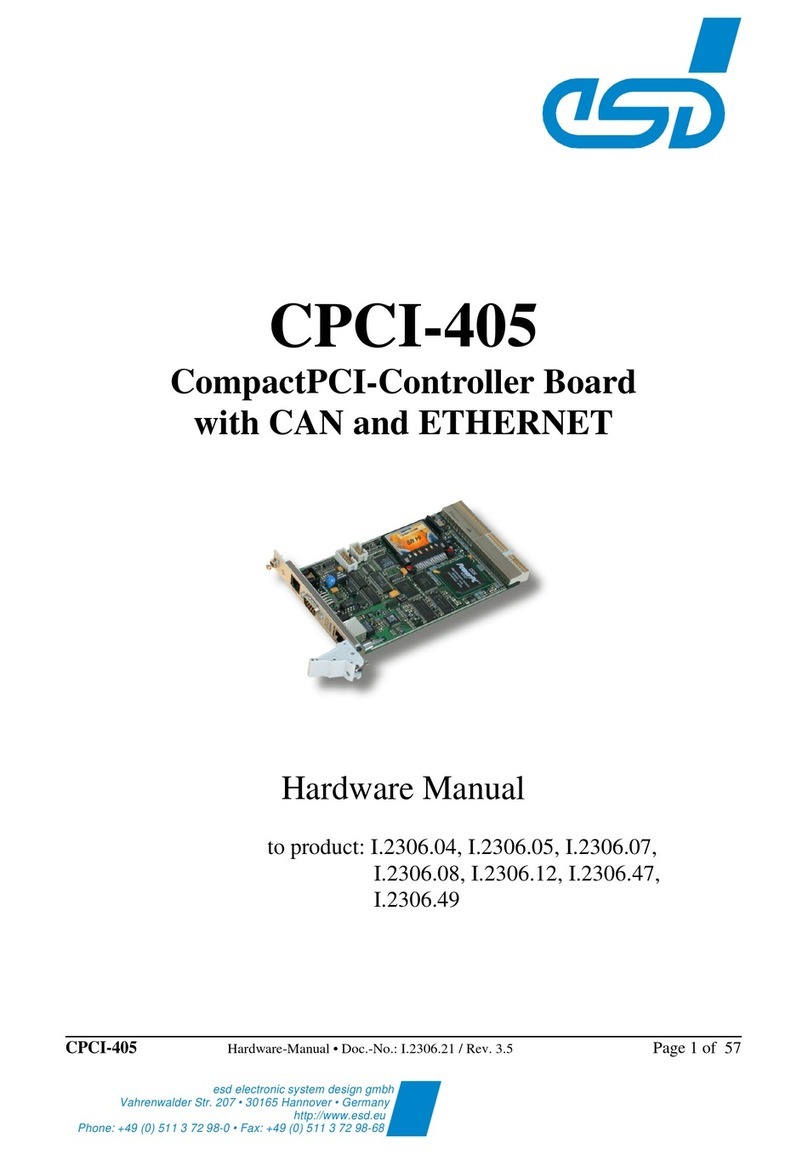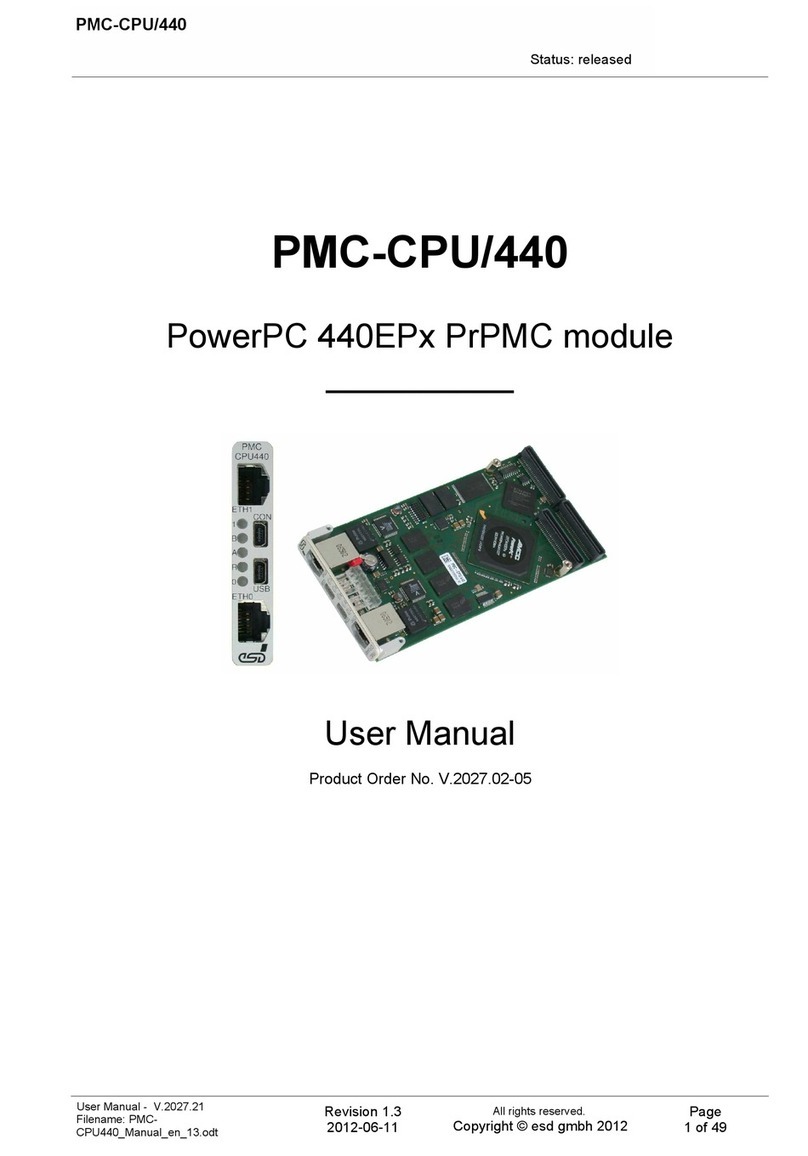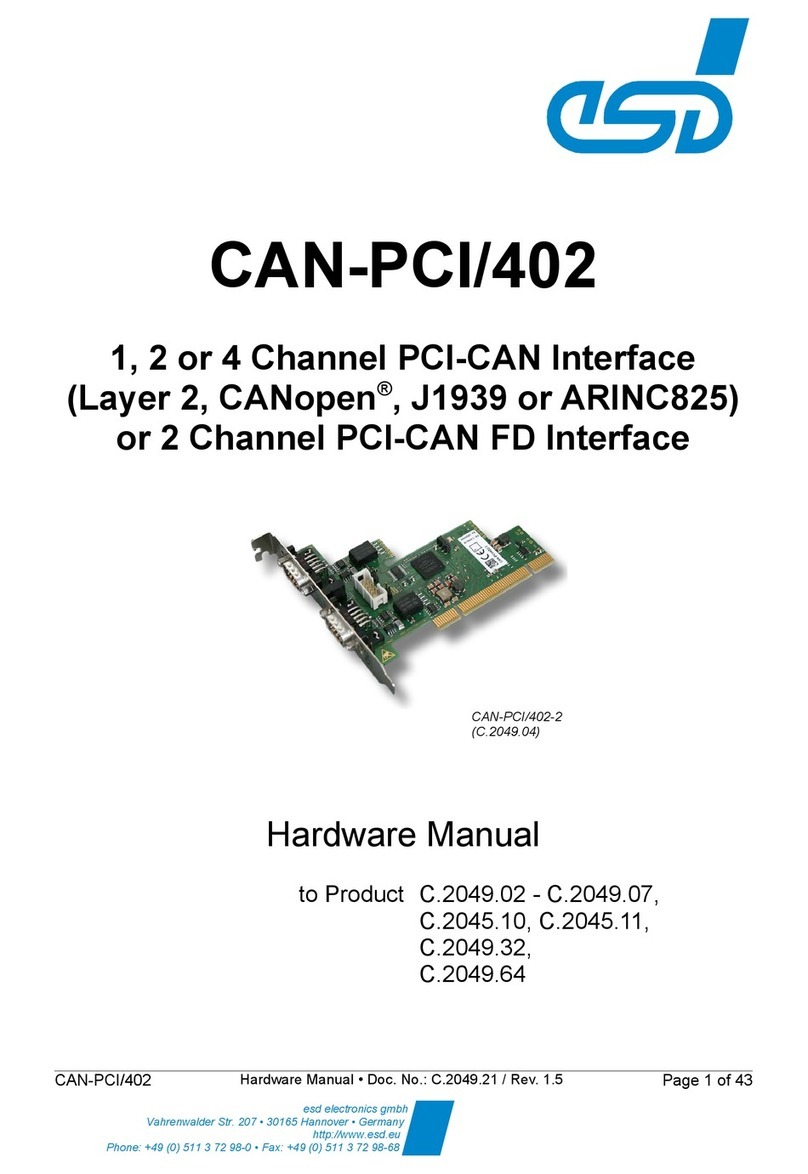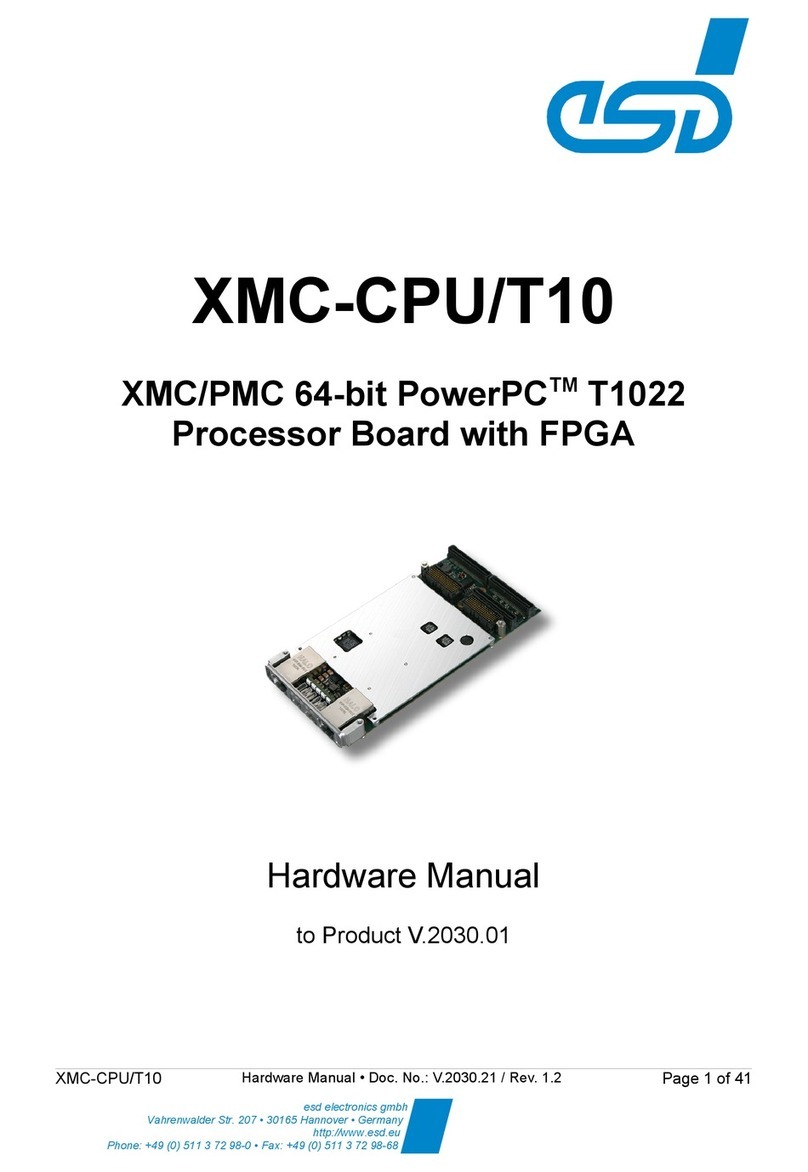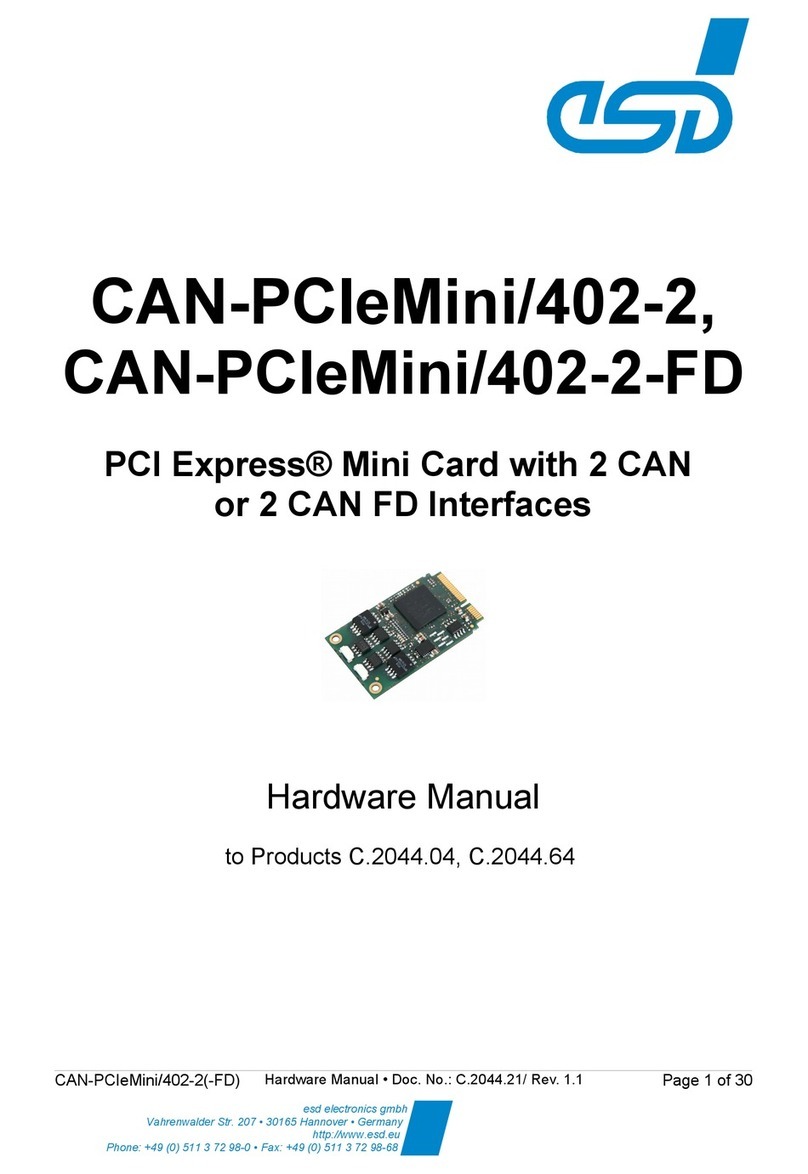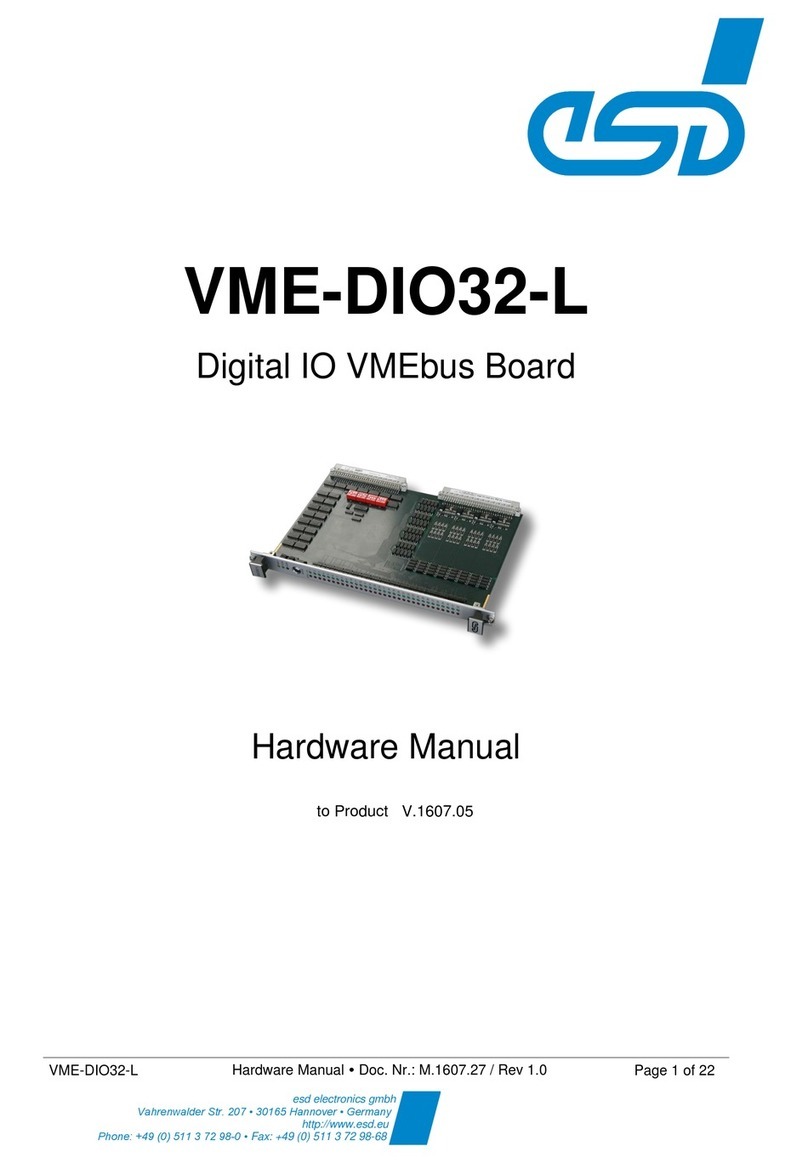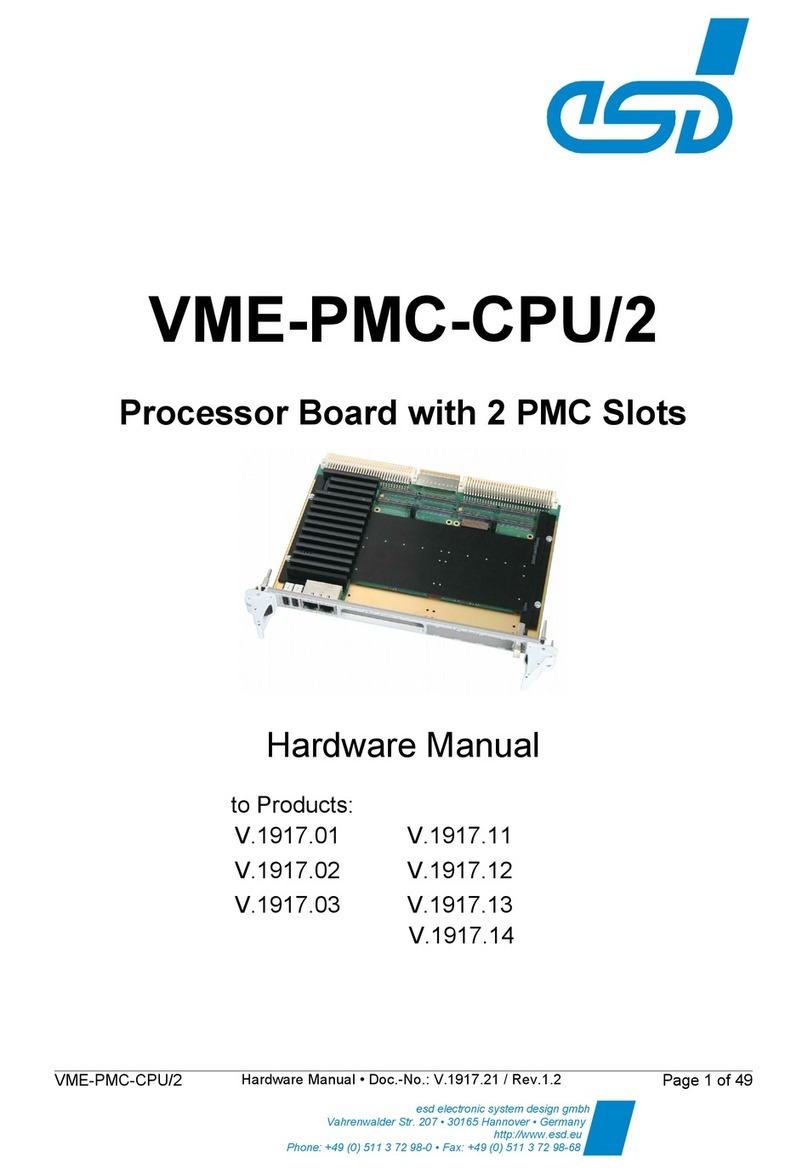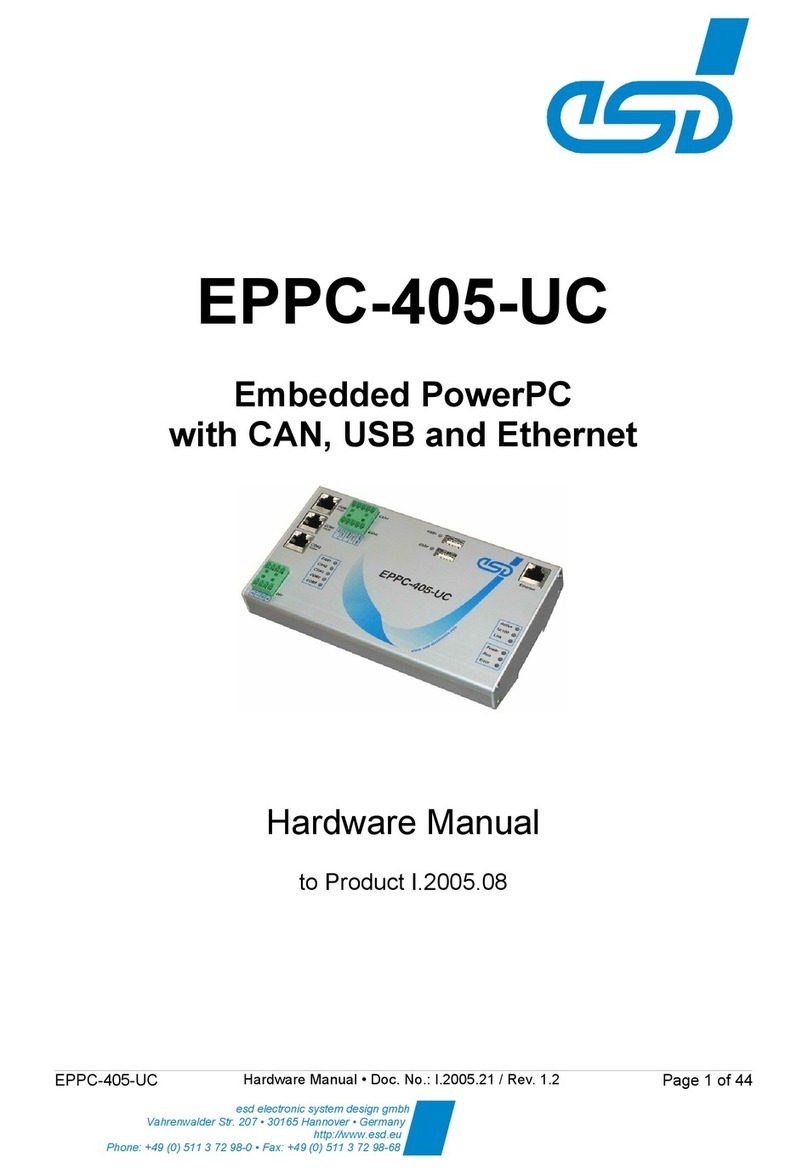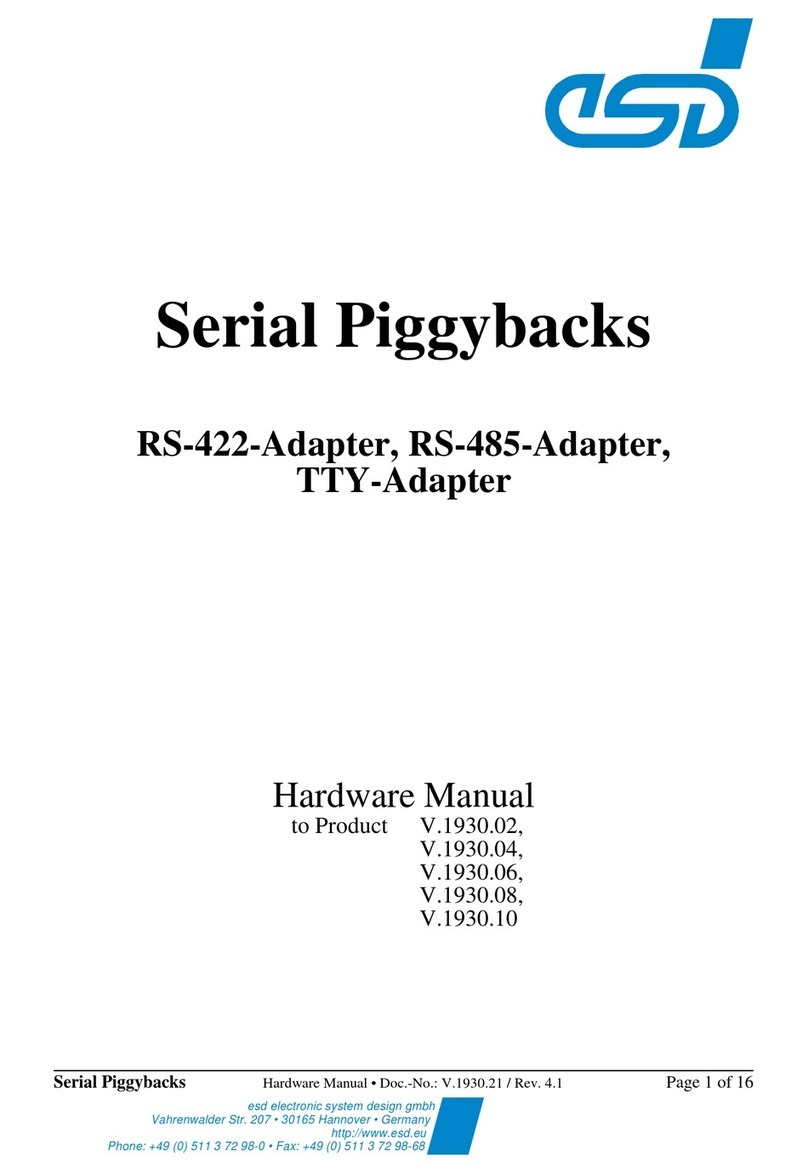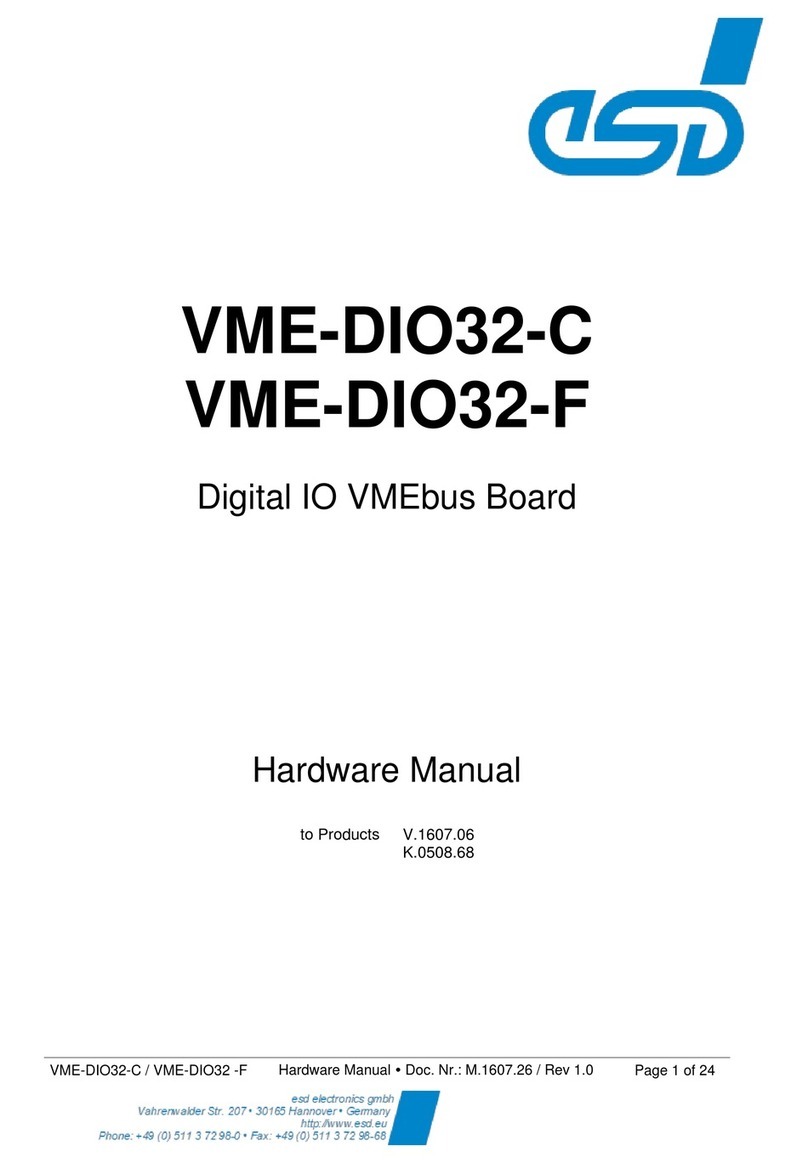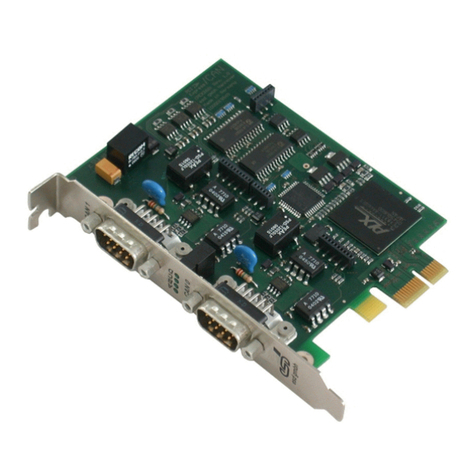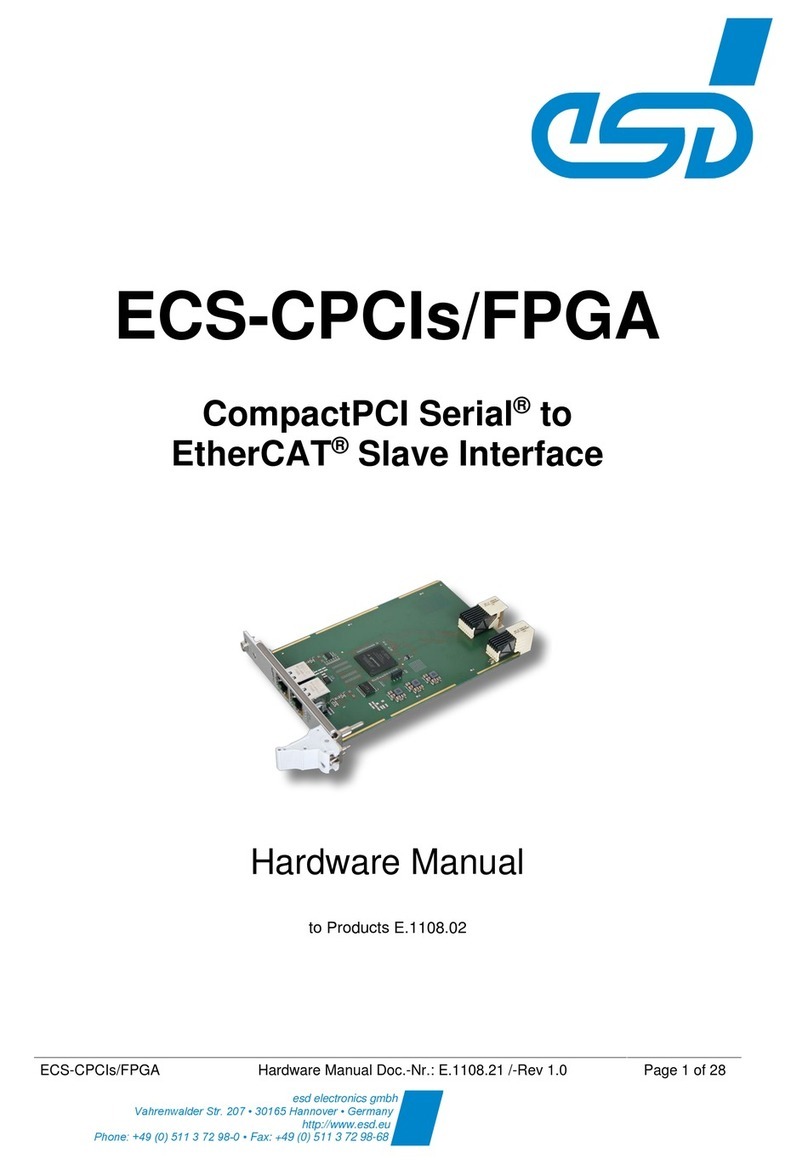
CAN-PCIe/200 Hardware Manual • Doc. No.: C.2042.21 / Rev. 1.2 Seite 5 von 22
Table of Contents
1. Overview .................................................................... 7
1.1 Description of the Module .................................................... 7
1.2 PCB View with Position of the Connectors ...................................... 8
2. Hardware-Installation ......................................................... 9
3. Technical Data .............................................................. 11
3.1 General Technical Data ..................................................... 11
3.2 PCI Express Interface ...................................................... 11
3.3 CAN Interface ............................................................ 12
3.4 Software Support .......................................................... 12
3.5 Order Information ......................................................... 13
4. Front Panel View with LED Display ............................................ 14
5. Connector Assignment of the CAN Bus Interface ................................. 15
5.1 CAN Interface on DSUB9 Connector .......................................... 15
6. Correctly Wiring Electrically Isolated CAN Networks ............................. 16
7. CAN-Bus Troubleshooting Guide .............................................. 20
7.1 Termination ............................................................. 20
7.2 CAN_H/CAN_L Voltage ................................................... 21
7.3 Ground ................................................................. 21
7.4 CAN Transceiver Resistance Test ............................................ 22
